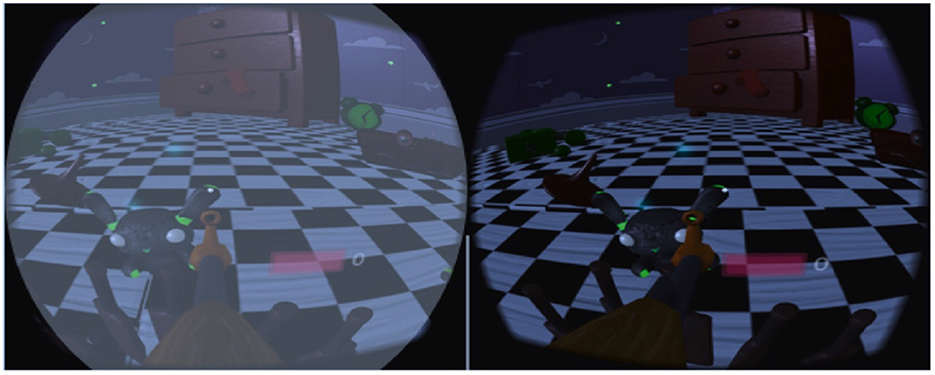Amblyopia, commonly referred to as lazy eye, is a condition that affects vision development during early childhood. It occurs when one eye fails to achieve normal visual acuity, even with the use of prescription glasses or contact lenses. This condition can lead to reduced vision in the affected eye if left untreated. Understanding the causes, recognizing the symptoms, and exploring available treatments are essential for managing this condition effectively.

What Is Lazy Eye?
Lazy eye is a neurodevelopmental vision disorder that typically begins in infancy or early childhood. It arises when the brain favors one eye over the other, leading to reduced visual input from the weaker eye. Over time, the brain may start to ignore signals from the weaker eye, further impairing its function. Unlike other vision problems, lazy eye is not caused by structural damage to the eye itself but rather by how the brain processes visual information.
How Common Is Lazy Eye?
- Lazy eye is one of the most common causes of vision impairment in children.
- It affects approximately two to three out of every hundred children.
- Early detection and treatment are crucial to prevent long-term vision issues.
Causes of Lazy Eye
Several factors can contribute to the development of lazy eye. These causes often involve conditions that disrupt normal visual development during critical stages of childhood.
Strabismus
Strabismus is a condition where the eyes are misaligned, meaning they do not look at the same point simultaneously. One eye may turn inward, outward, upward, or downward. When this happens, the brain receives conflicting images from the two eyes. To avoid double vision, the brain suppresses the image from the misaligned eye, which can lead to lazy eye over time.
Refractive Errors
Differences in refractive power between the two eyes can also cause lazy eye. For example, one eye may have nearsightedness, farsightedness, or astigmatism while the other does not. If the refractive error is significant and uncorrected, the brain may favor the eye with clearer vision, causing the other eye to become weaker.
Deprivation
Deprivation occurs when something obstructs light from entering and focusing properly in the eye. Common causes include congenital cataracts, droopy eyelids, or corneal scarring. When one eye is deprived of clear visual input during early childhood, it can result in the development of lazy eye.
Risk Factors for Lazy Eye
- Family history of lazy eye or other vision disorders
- Premature birth or low birth weight
- Developmental delays or neurological conditions
- Certain genetic syndromes
Symptoms of Lazy Eye
Identifying lazy eye early can make a significant difference in treatment outcomes. However, detecting this condition can be challenging because young children may not realize that their vision is impaired. Parents and caregivers should watch for the following signs:
Noticeable Eye Misalignment
One of the most apparent symptoms of lazy eye is an obvious misalignment of the eyes. The affected eye may wander inward or outward, especially when the child is tired or focusing on nearby objects.
Poor Depth Perception
Children with lazy eye may struggle with depth perception, making it difficult for them to judge distances accurately. This can affect their ability to catch a ball, navigate stairs, or perform other activities requiring spatial awareness.
Squinting or Closing One Eye
Some children with lazy eye may squint or close one eye to see more clearly. They might also tilt their head in an unusual way to compensate for their vision difficulties.
Difficulty Reading or Writing
Lazy eye can impact a child’s academic performance. They may have trouble reading books, recognizing letters, or writing neatly due to blurred or double vision.
When to Seek Medical Attention
If you notice any of these symptoms in your child, it is important to schedule an appointment with an eye care professional. Early intervention can prevent the condition from worsening and improve the chances of successful treatment.
Treatments for Lazy Eye
The primary goal of treating lazy eye is to strengthen the weaker eye and encourage the brain to use it properly. Treatment options vary depending on the underlying cause and the severity of the condition. In most cases, treatment is most effective when started before the age of seven, as this is a critical period for visual development.
Corrective Eyewear
For children with lazy eye caused by refractive errors, prescription glasses or contact lenses may be sufficient to correct the problem. By ensuring that both eyes receive clear visual input, the brain is less likely to favor one eye over the other.
Eye Patching
One of the most common treatments for lazy eye is occlusion therapy, which involves covering the stronger eye with a patch. This forces the weaker eye to work harder and improves its visual acuity over time. The duration of patching varies depending on the child’s age and the severity of the condition.
Tips for Successful Patching
- Start with short sessions and gradually increase the duration.
- Encourage activities that require focus, such as reading or drawing, while the patch is on.
- Monitor the child for signs of frustration or discomfort.
Atropine Eye Drops
Another option for treating lazy eye is the use of atropine eye drops. These drops temporarily blur the vision in the stronger eye, encouraging the brain to rely on the weaker eye. Atropine treatment is often preferred by children who find wearing an eye patch uncomfortable or inconvenient.
Vision Therapy
Vision therapy involves a series of exercises designed to improve eye coordination, focus, and tracking. This approach is particularly beneficial for children with strabismus or other alignment issues. Vision therapy is usually conducted under the guidance of an optometrist or ophthalmologist.
Examples of Vision Therapy Exercises
- Tracking moving objects with the eyes
- Practicing focusing on near and far targets
- Using specialized tools like prisms or balance boards
Surgical Interventions
In cases where lazy eye is caused by physical obstructions, such as cataracts or droopy eyelids, surgery may be necessary. Removing cataracts or correcting eyelid abnormalities can restore clear vision and allow normal visual development to occur.
Post-Surgical Care
After surgery, additional treatments like patching or corrective eyewear may still be required to fully address the lazy eye. Regular follow-up appointments with an eye care professional are essential to monitor progress.
Preventing Lazy Eye
While not all cases of lazy eye can be prevented, there are steps parents can take to reduce the risk of their child developing this condition.
Regular Eye Exams
Scheduling routine eye exams for your child is one of the best ways to detect lazy eye early. The American Optometric Association recommends that children have their first comprehensive eye exam at six months of age, followed by additional exams at three years and before starting school.
Encouraging Visual Stimulation
Providing infants and toddlers with opportunities for visual stimulation can support healthy vision development. Activities like playing with colorful toys, reading picture books, and engaging in interactive games can help strengthen eye muscles and improve coordination.
Addressing Family History
If lazy eye or other vision disorders run in your family, inform your child’s eye care provider. This information can help guide screening and intervention efforts to ensure early detection and treatment.
Living with Lazy Eye
While lazy eye can be a lifelong condition if untreated, many individuals respond well to early interventions and go on to enjoy good vision. Parents play a crucial role in supporting their child through treatment by staying informed, maintaining open communication with eye care professionals, and providing encouragement along the way.
Understanding the complexities of lazy eye empowers families to seek timely care and implement effective strategies for managing the condition. With proper treatment and ongoing support, children with lazy eye can achieve improved vision and a better quality of life.





